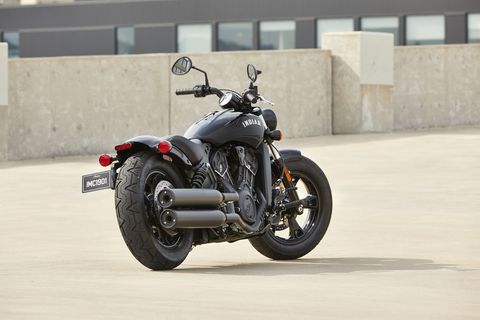Search “millennials and motorcycles” on Google and you find story after story claiming that Gen X’s successors are killing the industry. Deeper research indicates otherwise. A 2019 Progressive International Motorcycle Show survey of 2,008 participants with zero experience on a bike found 81 percent planned on getting their motorcycle endorsement, and 64 percent of those people were less than 35. While those surveyed were participants in the organization’s Discover the Ride initiative—giving unlicensed newbies the opportunity to dink around on an indoor track at 11 mph—the fact remains: All it takes is a cursory experience on a bike to get folks interested. Even millennials.
As a 28-year-old who just spent the past months putting my first miles on a mean machine from Indian, I’m not just an interested millennial, but a fully addicted fiend who can’t stay off the two wheels of high-octane fun stowed in the garage. And neither can my 60-year-old dad. Both of us had the truly once-in-a-lifetime opportunity to learn to ride side-by-side on the Indian Scout Bobber Sixty. The entry-level model debuted in 2020 as a more approachable version of the Scout Bobber that doesn’t skimp on the stripped-down retro look, and it remains the most recent offering in the Polaris-owned marque’s Scout lineup of cruisers for the 2021 model year.
“The Scout Bobber Sixty is approachable for riders of all skill levels for a variety of reasons,” Indian Motorcycle Vice President Reid Wilson told Autoweek. “The 1000cc motor is powerful but not overpowering, while the bike’s light weight, nimble handling, and low center of gravity create a very rideable machine for everyone.” A 61 cubic-inch (1000cc) V-Twin cranks out 78 horsepower and 65 lb-ft of torque at 5,800 rpm. Compared to the Scout Bobber, the Sixty has eight fewer cubic inches (133cc) of cylinder volume, five gears instead of six, and costs $2,000 less at $8,999. That’s a virtually unbeatable price for any new cruiser with that large of an engine.
Before saddling up, we were advised to start at the Motorcycle Safety Foundation’s Basic RiderCourse, offered locally through ABATE (A Brotherhood Aimed Towards Education) of Iowa, my home state. Between eight hours of classroom instruction and 10 hours of hands-on riding, the course fast-tracks the time it takes to become comfortable with a motorcycle’s basic functionality, from performing a proper mount/dismount to clutch control and executing low-speed U-turns in a 20-foot box. Our instructor highlighted swerving, cornering, and balanced application of the front and rear brakes as the three key maneuvers to master. Most importantly, the core skills and strategies learned here can be potentially lifesaving on the road. (I’m speaking from experience—more on that later.)
The short time I spent riding ABATE’s bikes—16-hp, single-cylinder Suzuki TU250s—at 30 mph maximum on a closed course left me absolutely giddy to hop on the comparatively big, bad Indian. Regarding new rider suitability, a couple of strengths were apparent before I even hit the starter switch. The seat sits at an extraordinarily low 26.5 inches above the ground, easily accommodating my dad at six-foot-two-inches tall, me at five-foot-ten-inches tall, as well as significantly shorter riders. Built into the speedometer’s dial is a simple multifunction display with a toggle switch to bring up the odometer, tach, engine coolant temperature, and battery voltage—with no fancy touchscreens or smartphone connectivity to distract a newbie.
Instead, my focus was purely on feeling the bike, beginning with the glug-glug-glug sound when I fired up the V-Twin and its visceral synchronized vibration. I’ve driven a few supercars with massive, far-too-powerful engines, but none delivered anything close to the exhilarating sensory experience I felt sitting with a liter-bike between my legs.
The hesitance I felt knowing the Scout Bobber Sixty is nearly five times as powerful as the tiny Suzuki faded almost immediately as I took my first long jaunt after obtaining my license. I set off to explore central Iowa’s plentiful low-traffic country roads, giving me my first opportunity to really rip the throttle through fourth gear. While quicker than most cars (including my 2012 Honda Civic SI), it’s not particularly speedy for a motorcycle—even in the cruiser category. But it felt extremely fast because I was used to the comfort of an enclosed cabin. Especially on the Scout Bobber Sixty with no windshield or fairings to redirect airflow around the rider, being pummeled by the atmosphere only heightens the sensation of moving at highway speeds for the first time. Needless to say the performance is plenty for a new rider to handle. By the end of the 50-mile trip, I’d smoothed out my gear shifting and I was feeling settled up to 65 mph.
Next up, with dad along for the ride, we headed to Ledges State Park, a scenic collection of timber, small bluffs, and a winding road descending about 1,000 feet over a mile. We leisurely road down the path, charging through shallow water features created by flooding from a local river and dirtying our bikes, pants, and jackets in the process. I enjoyed how motorcycles leave you thoroughly exposed to the elements. Sure, you’re more vulnerable, but the trade-off is you’re also more in tune with surroundings.
Which brings me to the trip back home. A vital piece of safety advice given during the RiderCourse was to “pretend to be invisible” on any public road, meaning you should always assume other drivers don’t see you and actively scan for potentially dangerous scenarios. I was leading on a highway when I spotted a shabby Ford Taurus wagon on a perpendicular frontage road looking like it was about turn into my lane. I backed down from 65 to 50 mph while watching with a keen eye before the vehicle—sure enough—entered my path. I applied strong pressure to both brakes to prevent a collision with only yards to spare. If I hadn’t been instructed with proper braking technique, I could have locked up the rear wheel and skidded into the back of the car or locked the front wheel and gone over the handlebars. And if I hadn’t been actively scanning, I would have certainly been in a nasty high-speed accident that could have left me (and my bike) seriously injured. The driver got a great look at my gloved third digit as we rode by.
As summer turned to fall, my dad and I continued to ride at least 10 miles almost daily. Differences in our riding styles emerged over time—I’m generally more aggressive, while he’s laid back. What’s great is that those differences didn’t prevent any father-son bonding. I was happy to sit back and let him determine the pace, and he would occasionally get a little feisty on the throttle. And when we weren’t together, neither of us were interested in driving our cars. He road into work every day for a month straight, and we even chose to ride solo during rainstorms on separate occasions. “I tried to remember what I learned in the RiderCourse,” he told me after his first experience on a wet road. “Ride in the car track, not the center of the lane. Use care when crossing painted surfaces. Slow down. I did all that and it worked. Riding wet is still more fun than driving dry.”
Winter has brought below-freezing temperatures, but we’re still motoring (Night Ranger reference courtesy of my dad). We’d both been dreading the day Polaris contacted us and asked for their loaner bikes back…so we bought them.
Like I said, we’re fully addicted fiends.
Log into the comments and let us know what you think of Indian’s terrific bike!
Source: Read Full Article
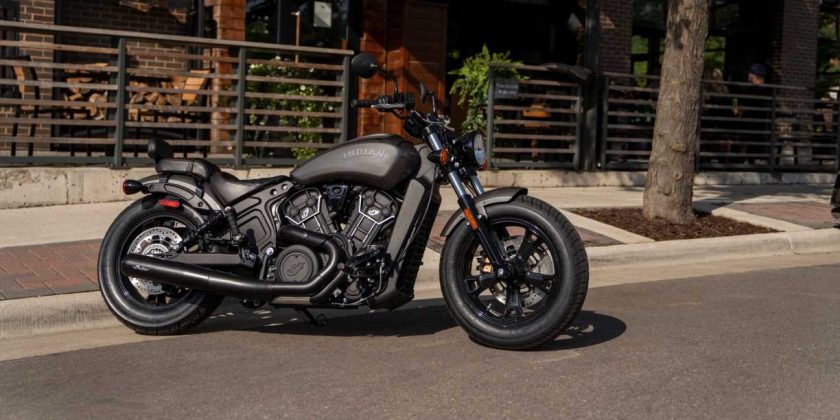
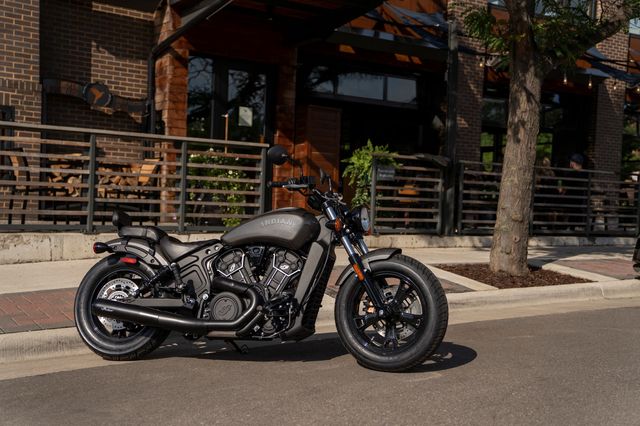
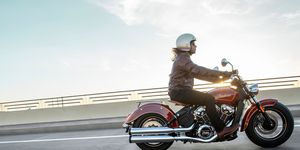
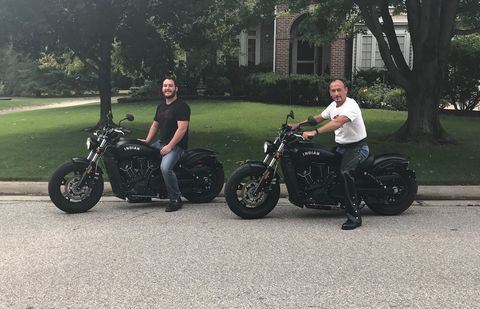
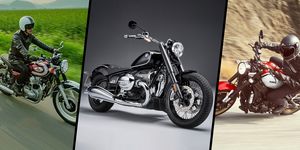

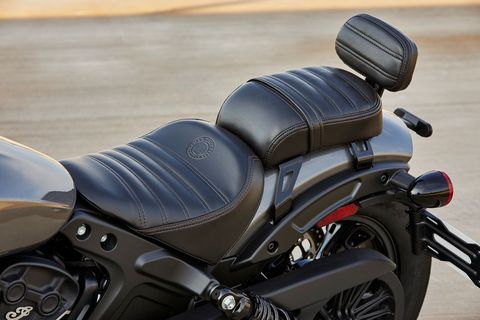
-AC4_4998_Apr1919_CaliPhoto.jpg?crop=1xw:0.75xh;center,top&resize=300:*)
